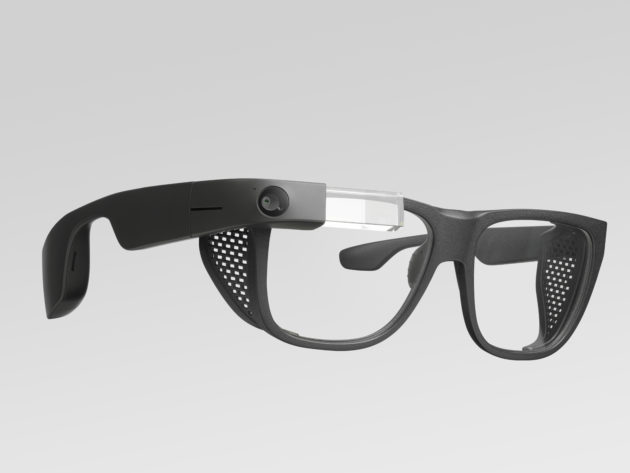Google Unveils New $999 Enterprise Augmented Reality Glasses
Google has announced a new business-friendly enterprise augmented reality headset that will definitely be taking on the newest version of Microsoft HoloLens. The Glass Enterprise Edition 2 will be a continuation of the transition that the tech company began two years ago for the device and, like Microsoft HoloLens 2, is targeting workers out on the field or on the factory floor.

The new version of Glass will provide a longer battery life, USB-C Port, an improved camera as well as lots of new improvements in the features over the previous model. Perhaps the biggest surprise is the price. For a device that will be taking on the pricier Microsoft HoloLens 2 which goes for $3,500, the new Google Glass AR glasses are significantly cheaper, with an MSRP of $999. Google is planning to sell the new augmented reality glasses through its vast network of partners but the company is yet to divulge a concrete date for release. Although Google has set the price at $999, expect the retail price to vary widely among the various retailers. Pricing plans are likely to include subscription options and one-time fees.
Just like its predecessor, the new Google Glass AR headset is enterprise-focused and will not be sold directly to consumers. Google is not yet prepared to position its Google Glass line as a mainstream augmented reality product. In spite of that, the company is still anticipating a higher demand for its Google Glass Enterprise Edition 2. Its hardware division has been shifted from the Google parent company Alphabet’s X “moonshot factory” and moved to Google’s family of products. The new changes are geared at helping Google meet the demand for the fast-growing market for the wearables for the workplace.
The new headset has retained the basic Glass design. The heads-up display design is still relatively simple, unlike that of the Microsoft HoloLens mixed reality headset. However, the new Glass packs more processing power with its Qualcomm Snapdragon XR1 chip which has been designed for VR and AR. According to the Google statement, the new XR1 chip’s processing power will include both computer vision as well as advanced machine learning capabilities. Google already has a consumer-focused computer vision tool known as Lens which provides some great capabilities such as restaurant recommendations and sign translations.
Google will also be incorporating new safety frames to its Glass AR glasses in collaboration with Smith Optics. The Glass will also pack bigger batteries for a longer battery life along with updated components. The new Glass will run on Android, including support for Android Enterprise Mobile Device Management. The existence of the Glass Enterprise Edition 2 along with the fact that it would be moving to Android had already been leaked several months back. However, it is only now with the launch that we are able to get a full picture of the device.
Originally, the augmented reality glass was billed as a mass market AR headset. Complaints about privacy and functionality however pushed Google to reinvent it as an augmented reality head-mounted device for factory workers, surgeons and other professional workplace applications.
Google says it has been able to realize faster production times, better quality and reduced costs by deploying the Glass Enterprise Edition 2 for troubleshooting or hands-free computing. Google’s original “Explorer Edition” went for $1,500 so the new Glass offers a better deal making it more accessible to users.
Both Google and Microsoft have long eschewed the consumer market for both augmented reality and virtual reality hardware. Their focus has instead been on the AR enterprise applications in industries such as construction, manufacturing and logistics. These AR devices allow workers to project onto the real world the images of various important documents such as blueprints and manuals so as to enable ease of reference when working on complex projects on the shop-floor or in the field. The first iteration of Google Glass released in 2012 targeted consumers but the company stopped selling the product to consumers in 1985 after a shaky rollout.
Google had promised to continue the development of the device and in 2017, the company pivoted its Glass projects and focused its development efforts on the enterprise market. There are various other companies that are also working on augmented reality glasses for the enterprise market such as Epson, Vuzix and Microsoft. As the business-focused market continues to grow by leaps and bounds, the consumer market is however yet to gain traction.
https://virtualrealitytimes.com/2019/05/21/google-unveils-new-999-enterprise-augmented-reality-glasses/https://virtualrealitytimes.com/wp-content/uploads/2019/05/The-Next-Generation-Google-Glass-600x450.jpghttps://virtualrealitytimes.com/wp-content/uploads/2019/05/The-Next-Generation-Google-Glass-150x90.jpgAR HeadsetsAugmented RealityHardwareTechnologyGoogle has announced a new business-friendly enterprise augmented reality headset that will definitely be taking on the newest version of Microsoft HoloLens. The Glass Enterprise Edition 2 will be a continuation of the transition that the tech company began two years ago for the device and, like Microsoft HoloLens...Sam OchanjiSam Ochanji[email protected]EditorVirtual Reality Times - Metaverse & VR

